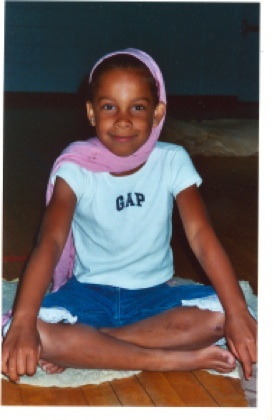Teaching Students "At Risk"
Our focus is teaching "at risk" youth. Children are defined
“at risk” if three or more of the following factors are present
in their families:
- Family income below the poverty line
- Single-parent family
- Parent's without a high school education
- Teen parent(s)
- Incarcerated parent(s)
- High mobility rate (frequent family moves)
- Child neglect and/or abuse
- Household in which no parent has full-time, year-round employment
"My grandmother came home from work really angry, and I told her to sit down. I put our yoga music on and she relaxed and
felt better. "
Taline, 5th grade
Research shows that each risk factor jeopardizes a child’s ability to develop mentally, emotionally, socially and academically. The effect of multiple risk factors is not merely additive; each risk factor significantly compounds the likelihood for poor outcomes.
Sustained stress and trauma produce atrophy and changes in a child’s brain chemistry that have consequences well into the future. Stress and abuse also creates a disparity between right and left brain hemispheres — a problem because balanced hemisphere activity is required for clear thinking and self discipline.
Stress also creates persistent hyperactivity, and restlessness. These effects readily undermine the goals of education and are strong predictors of future teen idleness, unemployment, high drop-out rates
and pregnancy.
Kundalini Yoga for Youth focuses its work in neighborhoods of highest risk to mitigate unacceptable outcomes, helping children turn stress into strength, anger into opportunity, despair into hope.










